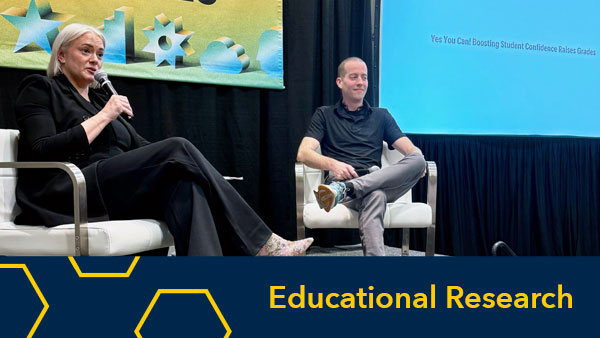9 million course visits, 1 million instructor views, 250,000 schedules created, 100,000 Users and 1 mission – keep student needs first
Sean Corp, Content Strategist
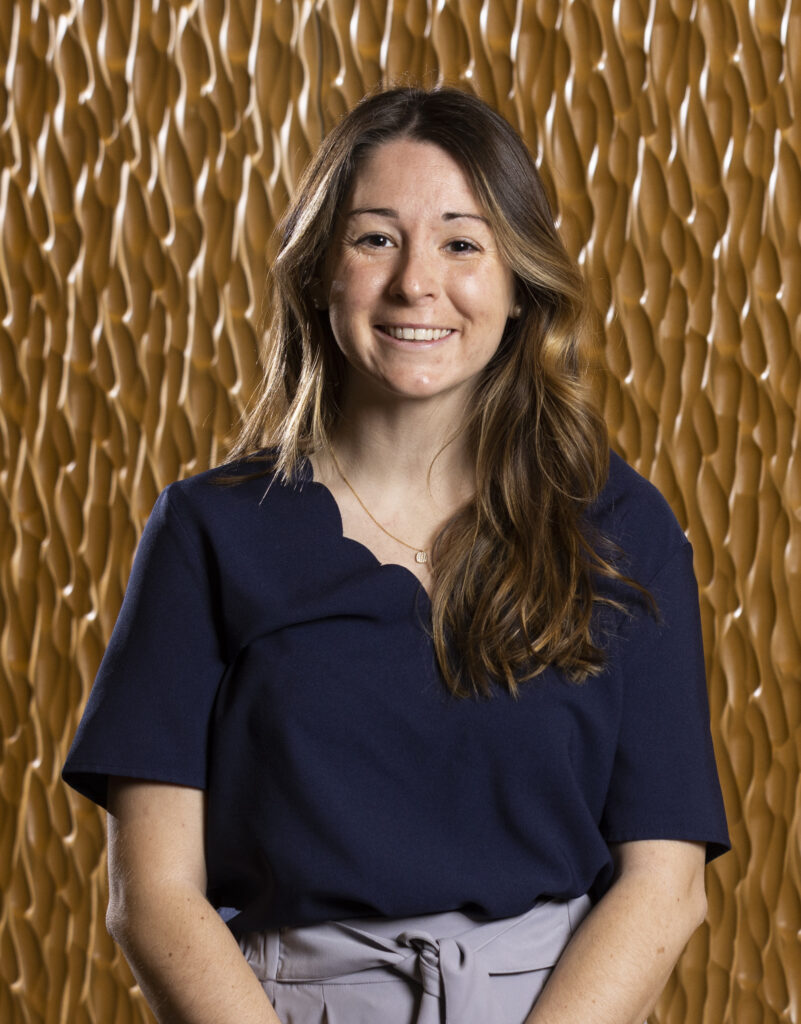
Putting together a schedule can be one of the most stressful times of year for a University of Michigan student. They balance multiple factors while ensuring they’re on track with all required courses and banking on their favorite class not filling up before they can register. As they work through this tangle of priorities, they face uncertainty, frustration and have plenty of questions. There are several questions along the way. That is where Karrie Inman, academic advisor for Stamps School of Art & Design, comes in. She receives a lot of questions from students, but often she relies on a single response – let’s find the answer together.
Inman can’t have every answer to every question for every student. More importantly, Inman said, even if the question is “What class should I take?” students often don’t want her to tell them what to do. They ask questions because they are seeking confidence that they are making the right choice.
Atlas, the Center for Academic Innovation’s interactive database of information on courses, instructors and majors, has been helping students find that confidence since 2016. Students are using Atlas nearly 10,000 times per day as part of backpacking, which started Nov. 14. As students finalized their schedules for the Winter semester, the tool surpassed 100,000 unique users, with more than 32,000 users utilizing Atlas in the last month alone. Not bad for something conceived two decades ago as a course information tool for professors and administrators.


“We always focus on a commitment to co-creation at the center. Atlas is a quintessential part of the student experience at University of Michigan because we are always working with students to give them the information and user experience they need to make decisions,” said Ben Hayward, director of software development and user experience design at the center. “Atlas is for the U-M community, and we’ve built it based on the insights and feedback we hear from our users. Our team and partners are motivated by the opportunity to support data-informed decision-making across the university.”
The tool has evolved considerably since launching in 2006 as the Academic Reporting Tool with course information for professors and administrators. First, it rebranded as ART 2.0 in 2014 under the Digital Innovation Greenhouse (DIG), which evolved into the Office of Academic Innovation. At that time, the Academic Innovation team and faculty innovators Gus Evrard, Arthur F Thurnau Professor of Physics in LSA, and chief developer Chris Teplovs, lecturer in the School of Information, wanted to think about ART’s future. The group wanted to add form and functionality and expand its reach to students who could use the tool to research potential classes. Over time, new features and data visualization elements displayed interactive course data, evaluations of instructors, and enrollment information.

It quickly became a hit with students, with more than 13,000 using Art 2.0 in 2017. Art 2.0 was rebranded as Atlas in 2019 with a newly redesigned interface with more user-friendly features, such as personalized student dashboards.
Meg Erlewine, a user experience designer at the center who works on Atlas, says there is nothing more important than understanding the problem users are trying to solve and working from there. That focus on the users has helped make Atlas a success.
“It is important to look at things from a user’s point of view, understand why they might use a feature, how they may access it, on their phone, computer, or tablet, for example, and the different challenges they might face,” Erlewine said. “Sometimes you’re surprised that though you designed something to be used in a particular way, the users have an entirely different application. It’s important to learn from your users because that is what guides future development.”
With each update, Atlas’ popularity grew. By late 2019, 30,000 students were using Atlas to research classes, professors and majors.
In 2021, the Atlas Schedule Builder tool update allowed students to build customized schedules. Atlas’ course info connected to the Schedule Builder tool, and those schedules could be sent directly to students’ backpacks as part of the official registration process.
Additional features included making it easier to share information from Atlas with other users, including academic advisors. In 2022, more than 47,000 students accessed Atlas and helped push it over that 100,000 unique user milestone on Nov. 23.

“We are always connecting with groups on campus, and we are careful and considerate when planning, designing and pushing new features live. We want to ensure it meets students’ needs while not negatively impacting what people have always loved about Atlas. At the same time, we are envisioning ways others, like advisers and professors, can use Atlas to better serve students,” said Dennis O’Reilly, associate director of application architecture at the center.
Many students access it year after year, with Atlas becoming an indispensable part of students’ yearly academic ritual as they plan for transitioning from one semester to the next.
“It’s a great way to organize your schedule because it allows you to look through classes visually and spatially rather than just looking at times. It makes building a balanced schedule much easier, “said Kate, a fourth-year user experience design major, about her experience with Atlas.
Making Data Work for Students
Its evolution and popularity among the campus community are only possible because everyone involved puts students first, said Gus Evrard, who first conceived of ART in the early 2000s and has worked with Academic Innovation on its development since 2014.

“That and perseverance,” Evrard said, reflecting on the long journey of Atlas after a team meeting at the center with developers, educational technology managers and quality assurance specialists. “There were many moments along the way we could have just stopped and said, this is good enough. But we kept pushing for more, and people kept opening their doors to us. And we’re still doing it to this day.”
Those open doors include that of other professors, including Tim McKay, the Arthur F. Thurnau professor of physics, astronomy, education, and the associate dean of undergraduate education in LSA, who pushed for the third-century grant that led to its development as a student-focused tool within DIG. It also includes students who have attended design jams, answered surveys and even helped build features as students fellows at the center, Evrard said. The broader advising community has also been a valuable sounding board in meeting the needs of students, including the Newnan Advising Center and the Advising Council at U-M, and Information and Technology Services staff helps CAI software developers connect Atlas to other internal systems and databases on campus.

“We are incredibly grateful for the partners who have helped make Atlas an essential decision-making tool for students navigating their academic journeys at U-M. Projects like Atlas are years in the making and require thoughtful planning across the university. Our team works closely with our colleagues at ITS and the Registrar’s Office to ensure we address stakeholder needs with care. We have an excellent team that mapped out a multi-year strategy and executed a vision for Atlas that helps every student at Michigan to make informed choices throughout their experience at U-M,” said James DeVaney, founding executive director of the center.
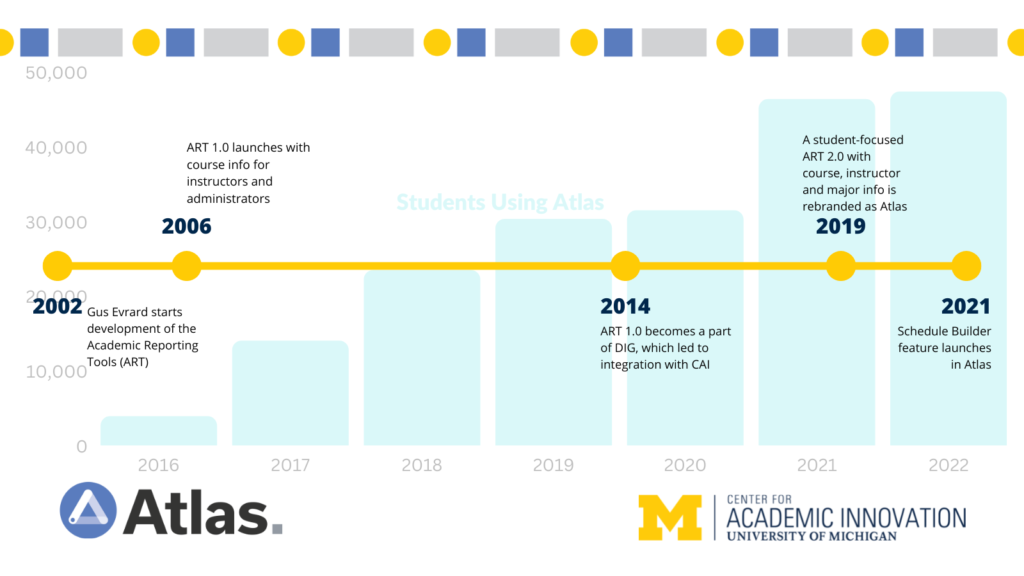
A Valued On-Campus Resource
Since launch, nearly 10 million course pages have been viewed in Atlas, and there have been 1 million visits to instructor profiles as students research potential classes. Often, students seek info on how many students in their major enroll in courses and how those students have performed, said academic advisers who use the tool with students regularly. Students also create schedules, a lot of them, with more than 150,000 created since Fall 2021.
Since the start of the latest Fall term, more than 39,000 users accessed Atlas, which represents nearly three-quarters of U-M’s student population. That is more than double the number who used Atlas just four years ago.
A Partner from ‘Day One’
The robustness of the data would not be possible without the continued partnership and commitment from the Registrar’s Office, Evrard said.
“The Registrar’s Office has been there from day one, and Brad Maki, Lisa Emery and Paul Robinson have been very vocal supporters of what we’re doing,” Evrard said. “When I started this journey, I didn’t appreciate how much information we actually hold or the willingness of the institution to share that information responsibly and broadly to campus.”
Robinson is the associate vice provost and university registrar. Emery and Maki are both senior associate registrars. Emery became involved in Art 2.0 in 2015 and has stayed engaged with the group ever since. Maki joined the university in 2018 and joined the Atlas planning team shortly after.

In speaking about their history with Atlas, Emery and Maki said the Registrar’s Office jumped at the chance to be on the ground floor of helping develop the tool and that they were thrilled someone wanted to take all this data and do something with it.
“We have more than 20 years of data about our courses and our students in Wolverine Access, and we wanted to democratize access to data about courses,” Emery said. “The idea of making information easily accessible and also visualizing that data in ways that could benefit students was always the biggest appeal.”

“We want to make the data actionable,” Maki said. “For students, for instructors, and advisors. Having so much information and functionality in one place is a huge benefit. We are eliminating the number of places students have to search for information, and the number of clicks students have to make.”
Students report that they appreciate both the simplicity of the interface and the scope and depth of the data available.
“It’s so easy to use because you can see all your classes laid out. It is a very efficient way to decide and organize your classes for the next semester,” said Amy, a first-year international studies major. “You can even have multiple schedules set, and information about the waitlist and seats remaining is very accurate.”
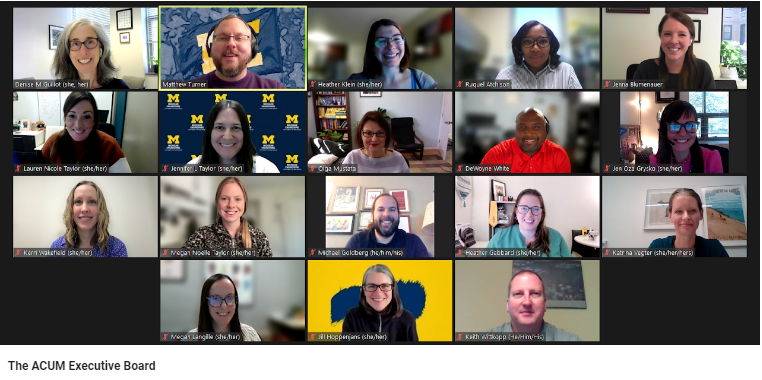
Helping Students Find Answers to Their Questions
Jennifer Taylor, an academic advisor at the Engineering Advising Center, said she uses the tool daily in meetings with students. Atlas has not only made it easier to help students find answers, but it also helps students ask better questions. And those are the questions where Taylor said she finds herself most able to help students succeed.
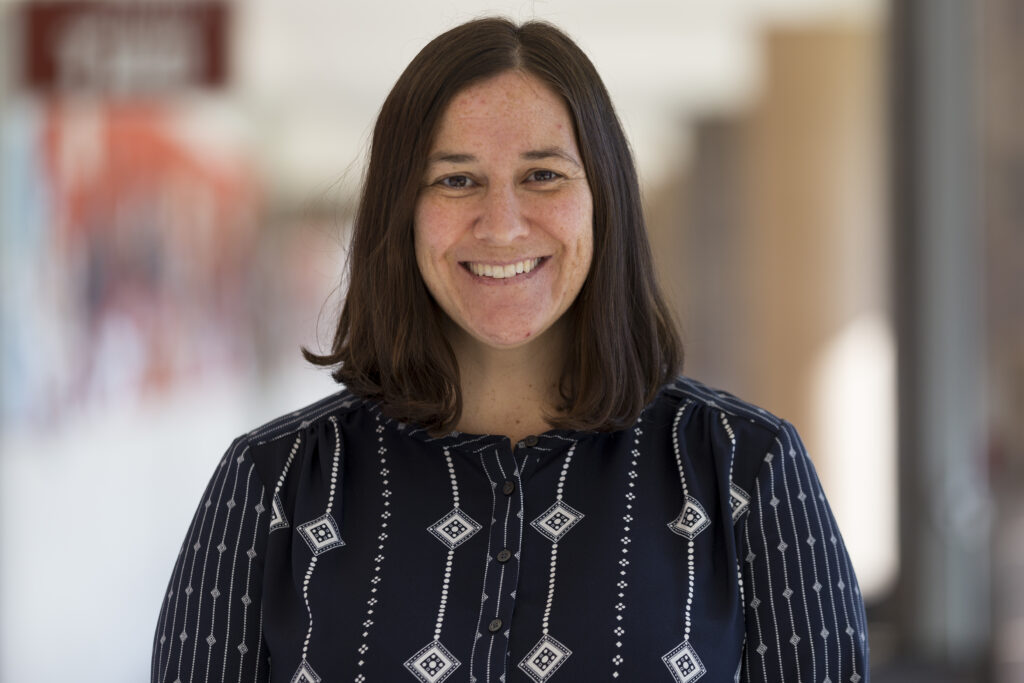
“We want to be in a position to have meaningful conversations with students. We want them to make informed choices because they know better than anyone what they need to succeed. My job is to help them be able to articulate it,” said Taylor. “Atlas is a tool to help them answer basic questions, and then I can ask more questions like ‘How can they be successful? How can they stay motivated? How can they get enough sleep? How can they stay organized?’ “
Taylor is a longtime supporter going back to the ART 2.0 days, and she chairs the technology committee of the Advising Council at U-M. In that role, she often talks about Atlas with her advising group and connects with the center with feedback and feature requests. Taylor said she is always looking for ways technology can help better serve students, and Atlas is among the best tools available.
“Technology can help us streamline the process and get the most out of our experiences with students. The more intuitive and cohesive the information is displayed, the more powerful the conversations,” she said.
Inman only became an advisor for Stamps in February 2021, but it didn’t take her long to realize just how powerful a tool Atlas was. Now, she says she uses Atlas in conversations with students every day.
“As an advisor, my goal is never to tell a student to take a specific class, but to empower them with the agency and freedom to choose for themselves,” Inman said. “Putting together a schedule can be scary, especially for first-year students. Atlas lays it out so nicely and gives students so many options. I hope they can leave our meetings understanding they don’t have to feel stressed building their schedule.”
Inman says the most important thing she stresses with students is making multiple schedules. Have a plan. Then have a backup plan. Then have a backup plan for your backup plan. Atlas and its Schedule Builder tool make that possible by allowing students to make a schedule, copy it and then make those adjustments in case a class gets full or they decide to pivot from their original plans.
“It’s a fantastic visualization tool, especially for art and design students who can see their schedule come to life,” Inman said.
While the interface looks simple, there is nothing more complex than designing for simplicity, said Aditi Anand, senior software developer for the center.
“Our priority was to develop an application that displays essential information to students without compromising usability,” Anand said. “It required us to think creatively and work as a team to organize large and diverse data in a way that made intuitive sense for students.”
Taylor said advising appointments are often just as much about finding the right fit for students as they are about helping students understand their course requirements.
“Today’s students know how to find information, so my conversations with them are about what works best for them, their learning style and their schedule,” Taylor said. “Some students learn best in the morning, and others would do anything not to have a class before 10 a.m. With Atlas, we can find options that meet their needs. That is why students love Atlas.”

From Information Tool to Communication Tool
From its inception as the Academic Reporting Tool to broader student access as ART 2.0 to its evolution into Atlas, it has always been about promoting transparency and openness, Evrard said.
“Students at U-M are exceptionally bright, and they are seekers of information, and we built something to display that information in a way that promotes openness and trust for decision-makers.”
In Evrard’s mind, the future of Atlas is a continued evolution from an information tool to an information and communication tool. He and the Academic Innovation team are working to continue refining what and how information is displayed. They are also working to make it easier for faculty, staff and advisors to use the tool and communicate with students.
“It has been amazing seeing Atlas go from concept to reality, and now to something that is consistently exceeding our expectations. Thanks to our amazing staff and partners, we can dream even bigger and think about new ways to impact the student experience at U-M,” said Hayward.
As it continues to grow and evolve, it will succeed because of the large, cross-institute team who work to make it better every semester, said Emery and Maki.
“There is no jockeying for position, and there are no power struggles in this effort. It’s the epitome of what collaboration should be, right? It is faculty, students, CAI and the Registrar’s Office all working toward a common goal — giving students the information that allows them to make their own decisions. And if you ask me, nothing is better than that.”
